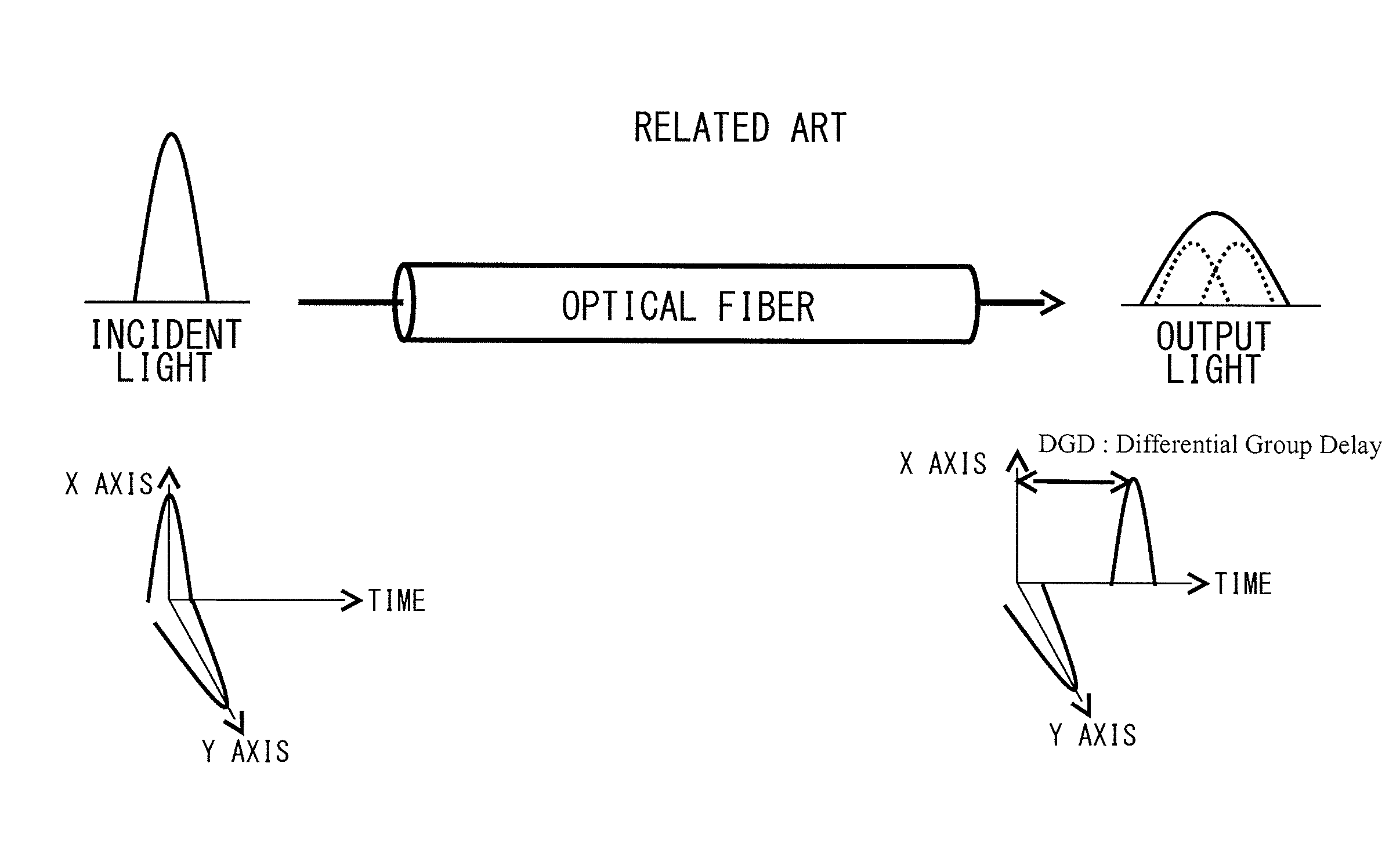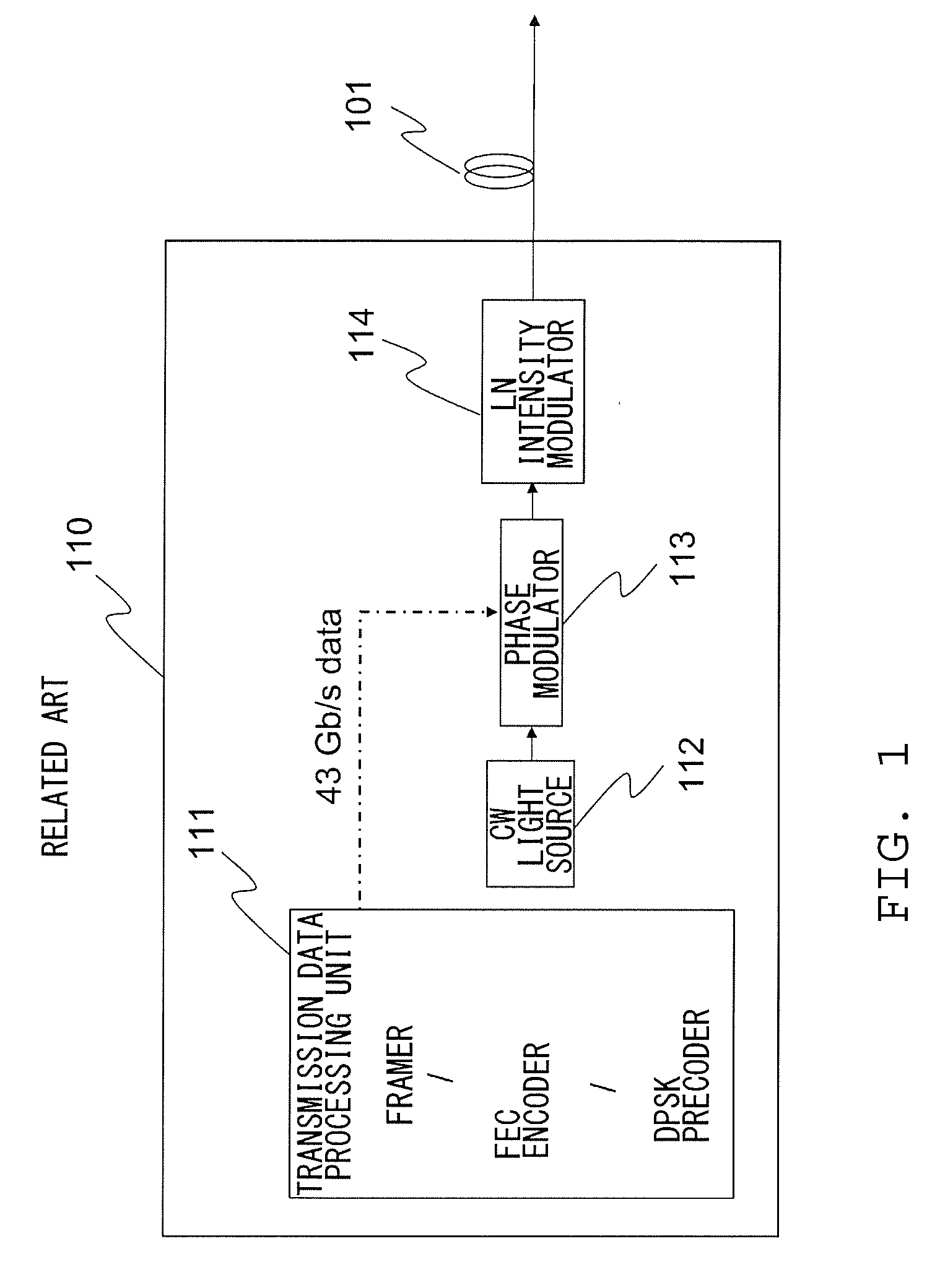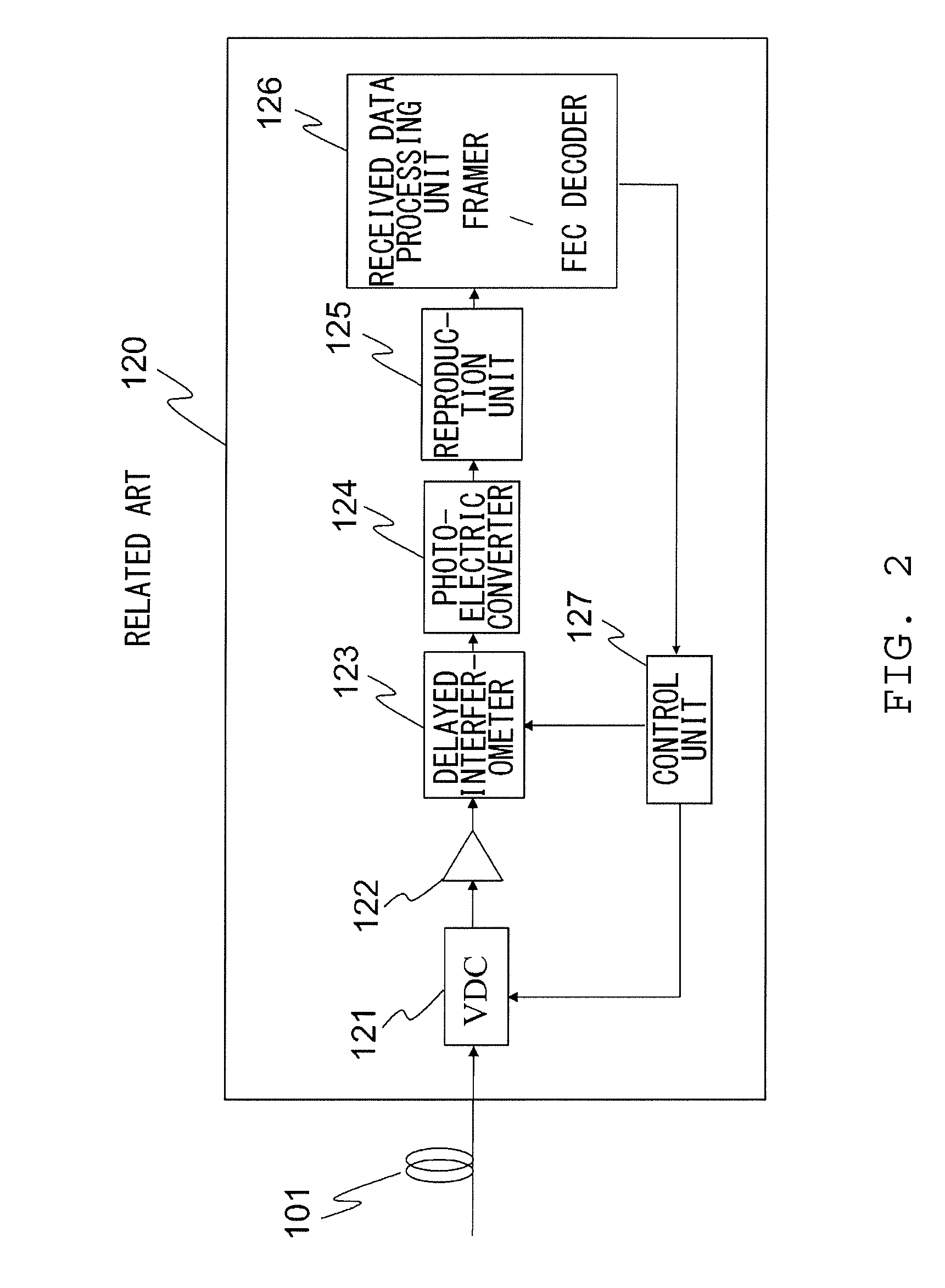Optical receiving apparatus and optical transmission system
a technology of optical receiving apparatus and optical transmission system, which is applied in the direction of transmission, electromagnetic transmission, transmission monitoring, etc., can solve the problems of long time, inability to quickly stabilize the control amount of the delayed interferometer and the variable dispersion compensator, and the search takes a relatively long time. , to achieve the effect of reducing the effect of polarization mode dispersion and short tim
- Summary
- Abstract
- Description
- Claims
- Application Information
AI Technical Summary
Benefits of technology
Problems solved by technology
Method used
Image
Examples
Embodiment Construction
[0045]The invention will now be described by reference to the preferred embodiments. This does not intend to limit the scope of the present invention, but to exemplify the invention.
[0046]The invention will now be described based on preferred embodiments with reference to the accompanying drawings. Note that like numbers refer to like elements throughout.
[0047]FIG. 8 is a block diagram showing a structure of an optical receiving apparatus 10 according to a first embodiment of the present invention.
[0048]As shown in FIG. 8, the optical receiving apparatus 10 according to the first embodiment includes a polarization control unit 20, a variable dispersion compensator (VDC) 11, an optical amplifier 12, a delayed interferometer 13, a photoelectric converter 14, a reproduction unit 15, a received data processing unit 16, and a control unit 17. The optical receiving apparatus 10 in the present embodiment differs from the conventional optical receiving apparatus 120 as shown in FIG. 2 in th...
PUM
 Login to View More
Login to View More Abstract
Description
Claims
Application Information
 Login to View More
Login to View More - R&D
- Intellectual Property
- Life Sciences
- Materials
- Tech Scout
- Unparalleled Data Quality
- Higher Quality Content
- 60% Fewer Hallucinations
Browse by: Latest US Patents, China's latest patents, Technical Efficacy Thesaurus, Application Domain, Technology Topic, Popular Technical Reports.
© 2025 PatSnap. All rights reserved.Legal|Privacy policy|Modern Slavery Act Transparency Statement|Sitemap|About US| Contact US: help@patsnap.com



